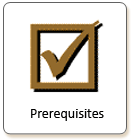14 New Prerequisites in LEED 2012
 I found a total of 14 new prerequisites in the second reading of the new LEED 2012 rating systems. Of course, not all are applicable to every rating system so the absolute number of new prerequisites each project will face in the future will be less than this. One thing is certain however – the bar is moving up with LEED 2012.
I found a total of 14 new prerequisites in the second reading of the new LEED 2012 rating systems. Of course, not all are applicable to every rating system so the absolute number of new prerequisites each project will face in the future will be less than this. One thing is certain however – the bar is moving up with LEED 2012.
This morning I found new information on the timeline for LEED 2012 implementation on the USGBC website. Here is the current timeline:
- March 1-20: Third Public Comment period is open
- June 1-30: LEED 2012 Ballot Voting Period
- November 2012 – LEED 2012 Launch
Here is my list of new prerequisites together with my initial impression of the impact:
LT – Sensitive Land Protection
Applicable to BD+C rating systems.
This is based on SSc1 – Site Selection from LEED BD+C. For most sites this should not create a problem.
SS – Environmental Site Assessment
Applicable to BD+C Schools and Healthcare.
This requires a Phase I Environmental Site Assessment for all sites and a Phase II audit and remediation if contamination is found. This will add to the cost of LEED Certification.
SS – Green Site Management Policy
Applicable to O+M rating systems.
This combines the current EBOM SSc1 and SSc2 credits without the integrated pest management plan. This should be relatively easy to achieve.
WE – Landscape Water Use Reduction
Applicable to O+M and BD+C rating systems.
Requires landscape requirements to be 30% (20% for EBOM) below EPA’s WaterSense Water Budget Tool. The options for international compliance are difficult to evaluate at this stage.
WE – Minimize Potable Water Use for Medical Equipment Cooling
Applicable to Healthcare only.
Potable water use allowed only for emergency back-up or per local requirements.
WE – Appliance and Process Water Use Reduction
Applicable to all rating systems.
Sets performance requirements for clothes washers, dishwashers, spray valves, process water use. This may not be applicable to many projects, particularly in the ID+C and Core and Shell rating systems.
MR – Construction and Demolition Debris Management Planning
Applicable to BD+C and ID+C rating systems
This requires a 20% diversion from landfill and waste data reporting by waste category including diversion rates. In most locations this should not create a problem, although I’m worried about my ability to achieve this in Africa.
MR – Facility Alterations and Additions Policy
Applicable to O+M rating systems.
The policy must cover waste management, purchasing and construction indoor air quality. As there are no performance requirements this should be easy to implement.
MR – PBT Source Reduction – Mercury
Applicable to Healthcare only.
No mercury containing equipment (thermostats, switching devices, etc.) and limits on mercury content in lights.
EQ – Construction Indoor Air Quality Management Plan
Applicable to BD+C and ID+C rating systems.
Formerly the “Construction Indoor Air Quality Management Plan – During Construction” credit. This should be relatively easy to achieve.
EQ – Minimum Acoustic Performance
Applicable to Schools only.
Max. background noise limit of 40 dBA and reverberation limits.
PF – Water Metering
Applicable to BD+C and O+M rating systems
Whole building metering required for all O+M and BD+C rating systems. BD+C rating systems also require metering of landscape irrigation, cooling tower, boiler, reclaimed water, process water if use is above specified limits.
PF – Building-Level Energy Metering
Applicable to BD+C and O+M rating systems
Electricity, natural gas, steam, chilled water, fuel oil, propane, biomass, etc. are required to be metered as applicable. This should be easy to achieve in most projects.
PF – Tenant-Level Energy Metering
Applicable to ID+C rating systems
Electricity and heating/cooling energy resource meters are required. The requirement for heating/cooling energy meters may be difficult to achieve in projects where these have not been included in the the base building design.
Please let me know if I missed anything or if you believe I don’t fully understand the impact these will have on your future projects. I would rather be challenged today than surprised tomorrow!

Michael,
You may want to review this link as there are significant impacts to some of the existing prerequisites also.
Changes from LEED 2009 to LEED 2012 2nd Public Comment
http://www.usgbc.org/DisplayPage.aspx?CMSPageID=2521
A general comment: While I agree that a Construction Indoor Air Quality Management Plan should be easy to accomplish, actually documenting it and the contractor(s) doing it is another story.
Your comments are spot Eric. I wrote earlier on the challenges with EBOM 2012 and covered some of the changes to existing prerequisites. I didn’t want to cover too much with my post today – this was long enough.
Are you intereated in doing a guest post on the changes to theexisting prerequisites?
BTW – lots of pilot credits are expiring on March 1.
Michael P. Smithing Executive Director Central and Eastern Europe Colliers International +3630 9214 219 sent from a phone